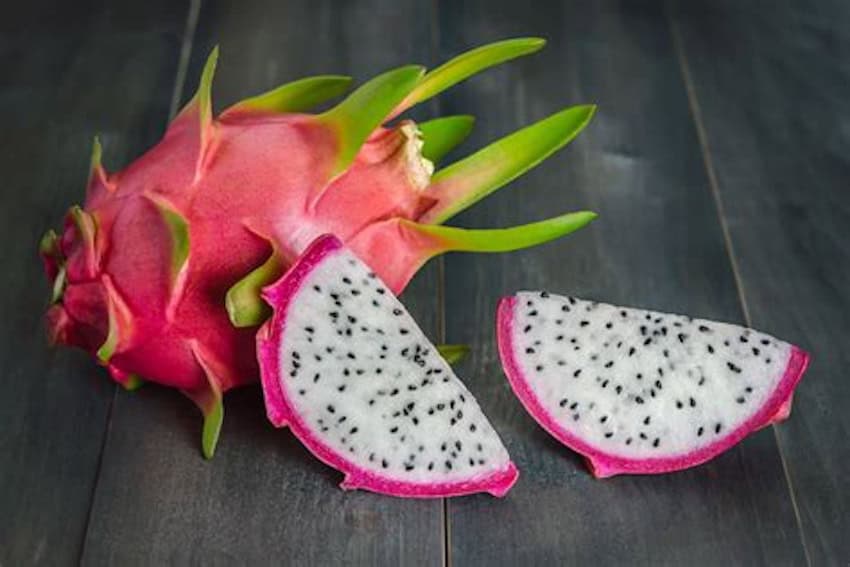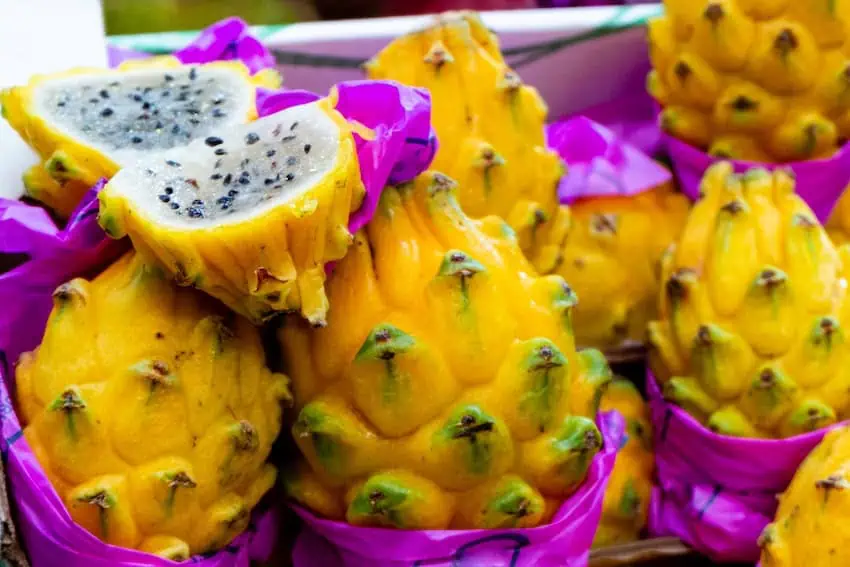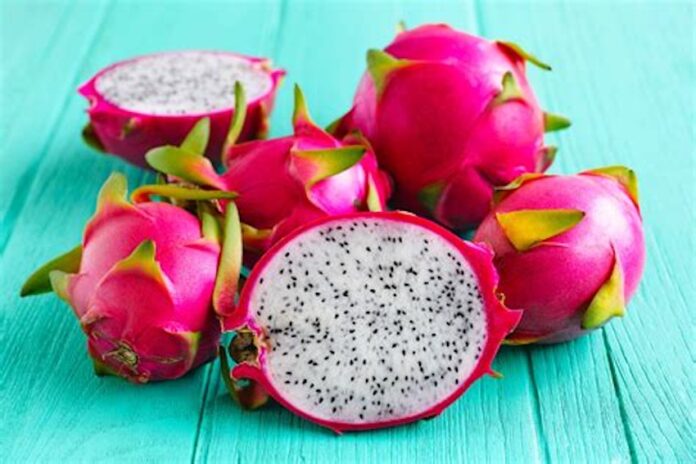One of the most exotic fruits in the world is the dragon fruit, also known as pitahaya. While many believe it originated in Asia, it actually comes from southern Mexico, Central America, and parts of South America.
The dragon fruit is visually striking, with its unique appearance and vibrant colors, making it stand out among other fruits we’ve explored in this series. Its flavor is just as delightful as its appearance. The fruit went unnoticed for many years until it reemerged in the 1990s and has steadily gained popularity at our tables ever since.

Its mysterious origin
The origin of pitahaya, commonly known as dragon fruit, is surrounded by le mystère. We lack archaeological remains or historical sources that can definitively confirm whether this fruit was consumed in pre-Hispanic Mexico.
The first challenge is that the term “pitahaya” comes from the Antilles and means “scaly fruit,” which means there is no indigenous language name to help trace its cultural use or find references in ancient codices. However, we do know that pre-Hispanic cultures were not averse to eating fruits from cacti, so it’s reasonable to assume they might have consumed dragon fruit.
The second challenge is that it likely did not hold the same significance as other fruits, like the prickly pear (tuna), which are featured in foundational myths and pre-Hispanic rituals.So, apparently preHispanic guys weren’t impressed by it.
Nonetheless, the varieties of cactus that produce dragon fruit are domesticated, and no plant domesticates itself. This suggests that indigenous cultures must have consumed the fruit regularly.
Pitaya or Pitahaya?
View this post on Instagram
Both terms are technically correct; however, in common usage, “pitahaya” typically refers to the Hylocereus undatus variety, which is what we commonly call dragon fruit. You can think of “pitahaya” as the name reserved for the fruit’s exotic and stunning cousin.
On the other hand, “pitaya” usually refers to the Stenocereus varieties. We have much more historical information about these varieties, which have been consumed for at least 9,000 years. They resemble prickly pears — rounder in shape, sometimes spiny and sometimes not—featuring colorful skins and pulp that looks like it’s straight out of a Pantone catalog. If you come across them, don’t hesitate to try one — they’re a showstopper in both flavor and appearance.
Are you prepared for a significant transformation?
Recent chemical studies reveal that dragon fruit offers a variety of health benefits:
1. Goodbye, anemia: Dragon fruit is rich in iron and vitamin C, which enhances iron absorption in the intestines.
2. A must for your skincare routine: With its high levels of vitamin C and antioxidants, dragon fruit helps keep your skin firm, stimulates collagen production, and fights premature aging. Say hello to glowing skin!
3. Powerful antioxidant properties: In addition to vitamin C, dragon fruit contains phenols and betacyanins that support cell health and may help prevent chronic diseases.
4. Immune system booster: It encourages the production of white and red blood cells, as well as platelets, which boosts your body’s natural defenses.
5. Supports a healthy gut: Rich in prebiotics and fiber, dragon fruit promotes digestion and overall gut health.
6. Heart-friendly: Dragon fruit may help prevent arrhythmias and heart issues, lower cholesterol levels, and assist in regulating blood sugar.
7. Strong bones: Packed with calcium, magnesium, and phosphorus, it supports bone health and promotes growth in children.
8. Weight control: With 85% water content, dragon fruit also contains tyramine, which encourages your body to use stored fat for energy. It aids in eliminating excess fluids and toxins as well.

An endless variety
Now that you know dragon fruit is the secret ingredient to looking and feeling your best, let’s get to the exciting part—how to eat it:
- Raw: This is my favorite way to enjoy dragon fruit, as it offers the most health benefits.
- In drinks or smoothies: Consider trying lime water with dragon fruit or a berry smoothie enhanced with dragon fruit for a powerful boost of antioxidants. Don’t forget to add chia seeds for an extra superfood kick!
- In desserts: You can incorporate it into gelatin, mousse, or ice cream, which is my personal favorite (in moderation, of course).
- In salads: I can’t recommend enough this delicious combination: dragon fruit, kiwi, pineapple, almonds, shredded coconut, and mint leaves. For added protein, include tofu, chia seeds, or Greek yogurt. Want something savory? Swap the fruits for avocado and cucumber, and dress it with lemon juice, oil, salt, and pepper. Adding chicken makes it even more delicious!
- Cocktails: I’ve never been a fan of adding salads to cocktails, but I can’t deny that some recipes are refreshing and delicious. I have to confess that the mezcalita de pitahaya, margarita de pitahaya, and pitahaya gin and tonic taste way too good.
Amigos, even if you’re just experimenting, try including dragon fruit in your diet regularly. You might be surprised at how often people start asking what you’re doing to look so youthful and radiant.
María Meléndez is a Mexico City food blogger and influencer.
